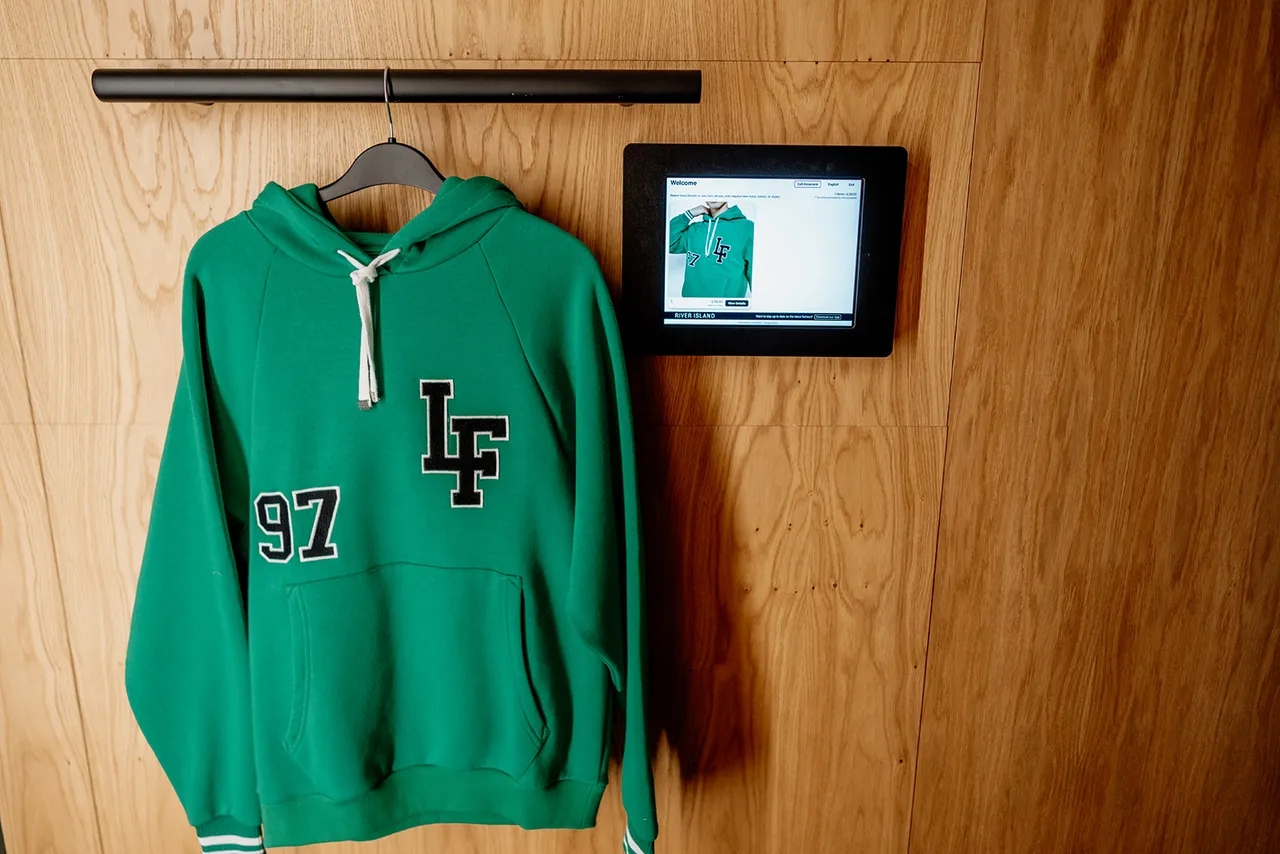RFID Mandates 101: Retail’s Future After the Walmart Mandate
When Walmart initiated a mandate for its suppliers to implement RFID tagging across various product categories, the retailer sparked a shift in consumer consumer product packaging trends. Over time, RFID technology has offered great benefits to the retail industry, such as accuracy in inventory tracking and management. Walmart’s RFID mandate set a new standard for supply chain efficiency and operational effectiveness, compelling other retailers to follow suit.
Moreover, the mandate influenced industry-wide practices and encouraged the adoption of RFID technology among major brands. By improving inventory visibility and accuracy through RFID technology, brands are able to reduce stockouts and enhance the overall shopping experience for customers.
If you’re looking to reap similar benefits, this article will further explore the current state of RFID implementation, how Walmart’s initiative has impacted other industry players, and provide potential retail trends.
What is the Walmart RFID Mandate?
The Walmart RFID mandate requires all suppliers to adopt Radio Frequency Identification (RFID) technology for tracking and managing inventory. The mandate aims to enhance the efficiency, accuracy, and visibility of inventory management across Walmart’s vast network of stores and distribution centers.
In 2003, Walmart announced the initial RFID mandate for its top 100 suppliers in the U.S., requiring them to incorporate RFID tags into their packages and products. Over the years, the mandate expanded into other retail categories, such as toys, home, electronics, entertainment, and sporting goods departments. By 2023, almost all general merchandise categories require RFID labels.
This system enables real-time inventory tracking, improving accuracy and reducing the need for manual stock checks. Suppliers must ensure that each item is tagged correctly and that their systems are compatible with Walmart’s RFID infrastructure.

The RFID Mandate’s Impact on Suppliers and Retailers
- Compliance challenges: Initially, many suppliers faced difficulties adapting to the new system. The cost of implementing RFID technology, including the tags and necessary infrastructure, posed a significant hurdle, especially for smaller suppliers.
- Initial resistance and adaptation: Despite initial resistance, the tangible benefits of RFID technology in inventory management, such as reduced out-of-stocks and improved supply chain efficiency, encouraged broader adoption. As more suppliers adapted, the overall efficiency of Walmart’s supply chain improved, setting a new standard in retail logistics.
Implementation of RFID in Retail
Since the implementation of the Walmart RFID mandate, the retail industry has seen significant advancements in the adoption and utilization of RFID technology. Following Walmart’s lead, many other major retailers have implemented their own RFID initiatives. These companies have recognized the value of RFID in improving inventory accuracy, reducing shrinkage, and enhancing the customer experience.
The athletic apparel retailer Lululemon adopted RFID technology to enhance its omnichannel strategy. By tagging each item with an RFID label, the company improved its inventory accuracy to 98% in 2017. This accuracy enables the retailer to offer reliable buy-online, pick-up in-store (BOPIS), and ship-from-store services, significantly boosting customer satisfaction and sales.

Challenges and Limitations
Despite the widespread adoption and benefits, retailers can still face challenges with RFID implementation:
- Cost – the initial investment for RFID technology, including tags, readers, and software, can be substantial. While costs have decreased over time, they remain a barrier for smaller retailers.
- Integration – integrating RFID systems with existing IT infrastructure and processes can be complex and time-consuming. Retailers must ensure that their systems are compatible and that staff are trained to use the new technology effectively.
- Privacy concerns – the use of RFID technology raises privacy concerns among consumers about the potential for unauthorized tracking and data breaches. Retailers must address these concerns by implementing robust data security measures and educating customers on how their data is protected.
Influence on Other Retailers and the Industry
The Walmart RFID mandate has had a significant impact on the retail industry, influencing other major retailers and shaping industry standards. The initiative has affected other retailers, spurred collaborative efforts, and altered supply chain dynamics.
For instance, Nordstrom implemented its own RFID mandate in 2022 for the products sold in its stores. This directive requires suppliers to ensure that all items across Nordstrom’s various channels, including Nordstrom, Nordstrom CA, Nordstrom Rack, and Nordstrom Rack CA, are equipped with RFID tags.
Collaborative Initiatives and Industry Standards
Walmart’s RFID mandate has spurred collaborative efforts within the retail industry to establish common standards and best practices for RFID implementation. Industry groups, in particular, have been instrumental in developing standardized guidelines and performance benchmarks for RFID technology.
- GS1 Standards – GS1, a global organization dedicated to the design and implementation of international standards for supply chains, has developed comprehensive guidelines for RFID use in retail. These standards help ensure interoperability and consistency across different retailers and suppliers, facilitating the widespread adoption of RFID technology.
- RFID Lab at Auburn University – the RFID Lab has played a critical role in researching and promoting RFID best practices. The lab’s work has helped retailers understand the technical requirements and business benefits of RFID implementation, driving industry-wide adoption.
Changes in Supply Chain Dynamics
The adoption of RFID technology has also altered supply chain dynamics, enhancing visibility and efficiency across the entire supply chain. Retailers using RFID can track inventory in real-time, leading to better demand forecasting, reduced lead times, and improved order accuracy.
- Enhanced visibility – RFID technology provides real-time visibility into inventory levels, enabling retailers to make informed decisions about stock replenishment and allocation. This visibility helps prevent stockouts and overstock situations, optimize inventory levels, and reduce carrying costs.
- Improved efficiency – RFID helps streamline various supply chain processes, such as receiving, sorting, and shipping. Automated inventory tracking reduces the need for manual checks, speeding up operations and minimizing errors. This efficiency translates into cost savings and improved profitability for retailers.
RFID in Retail: 4 Key Future Trends
The future of RFID technology in retail looks promising, with several emerging trends and potential new mandates on the horizon. This section explores these trends, technological advancements, and the possible shifts in the retail landscape.
1. RFID with IoT integration
The integration of RFID with the Internet of Things (IoT) is a significant trend. Combining RFID with IoT devices allows for enhanced data collection and analysis, enabling retailers to gain deeper insights into inventory management, customer behavior, and supply chain operations. This integration facilitates real-time tracking and monitoring of products throughout the supply chain, improving efficiency and reducing costs.
Amazon Go stores utilize RFID in conjunction with IoT to provide a seamless shopping experience. Customers can walk in, pick up items, and walk out without stopping at a checkout, thanks to RFID tags and IoT sensors that track purchases in real time. This integration allows for real-time inventory management, automated restocking, and better demand forecasting.

2. Advanced data analytics
The use of advanced data analytics in conjunction with RFID technology is becoming more prevalent. Retailers can leverage the vast amounts of data generated by RFID systems to gain actionable insights into inventory levels, sales trends, and customer preferences. Predictive analytics can help retailers optimize stock levels, forecast demand, and enhance customer experiences.
Zara uses RFID technology paired with advanced data analytics to manage inventory and track product performance. This enables the brand to quickly respond to trends and optimize stock levels in their stores. Similarly, retailers can use data from RFID systems to analyze shopping patterns, improve product placement, and enhance supply chain efficiency.
3. Sustainability initiatives
With growing concerns about sustainability, future RFID mandates may include requirements for eco-friendly and recyclable RFID tags. Retailers and suppliers will need to develop and adopt sustainable RFID solutions that minimize environmental impact. This shift towards retail sustainability will also drive innovation in the RFID industry, leading to the development of greener technologies.
As sustainable RFID tags become more prevalent, retailers can align with corporate social responsibility goals and consumer demand for greener products.

4. Enhanced customer experiences
The future of RFID in retail will focus on enhancing customer experiences. RFID technology can enable personalized shopping experiences, faster checkout processes, and improved product availability. Retailers will continue to explore innovative ways to use RFID to create seamless and engaging shopping experiences for their customers.

For example, fashion retailer River Island uses RFID tags on its merchandise. Customers can scan these tags in fitting rooms to see product details, such as available sizes and colors, on a smart screen. They can then browse and request similar or related items from service staff directly from the fitting room with just a click. Personalized and seamless shopping experiences such as these help retailers drive customer engagement and loyalty.
Creating Long-Term Impact in the Retail Landscape
Overall, the widespread adoption of RFID technology will continue to have profound impacts on the retail landscape. As the technology continues to evolve, it will play a crucial role in enabling retailers to stay competitive in an increasingly dynamic market. Numerous technological advancements and industry shifts are on the horizon, and retailers who embrace these trends and leverage the full potential of RFID technology will be well-positioned to succeed.
Ready to revolutionize your retail operations? Meyers can help you implement sustainable and efficient RFID labels tailored to your brand’s needs. Don’t miss out on the opportunity to stand out in the marketplace. Contact the Meyers team of experts and explore retail product packaging solutions that can drive your business success.

